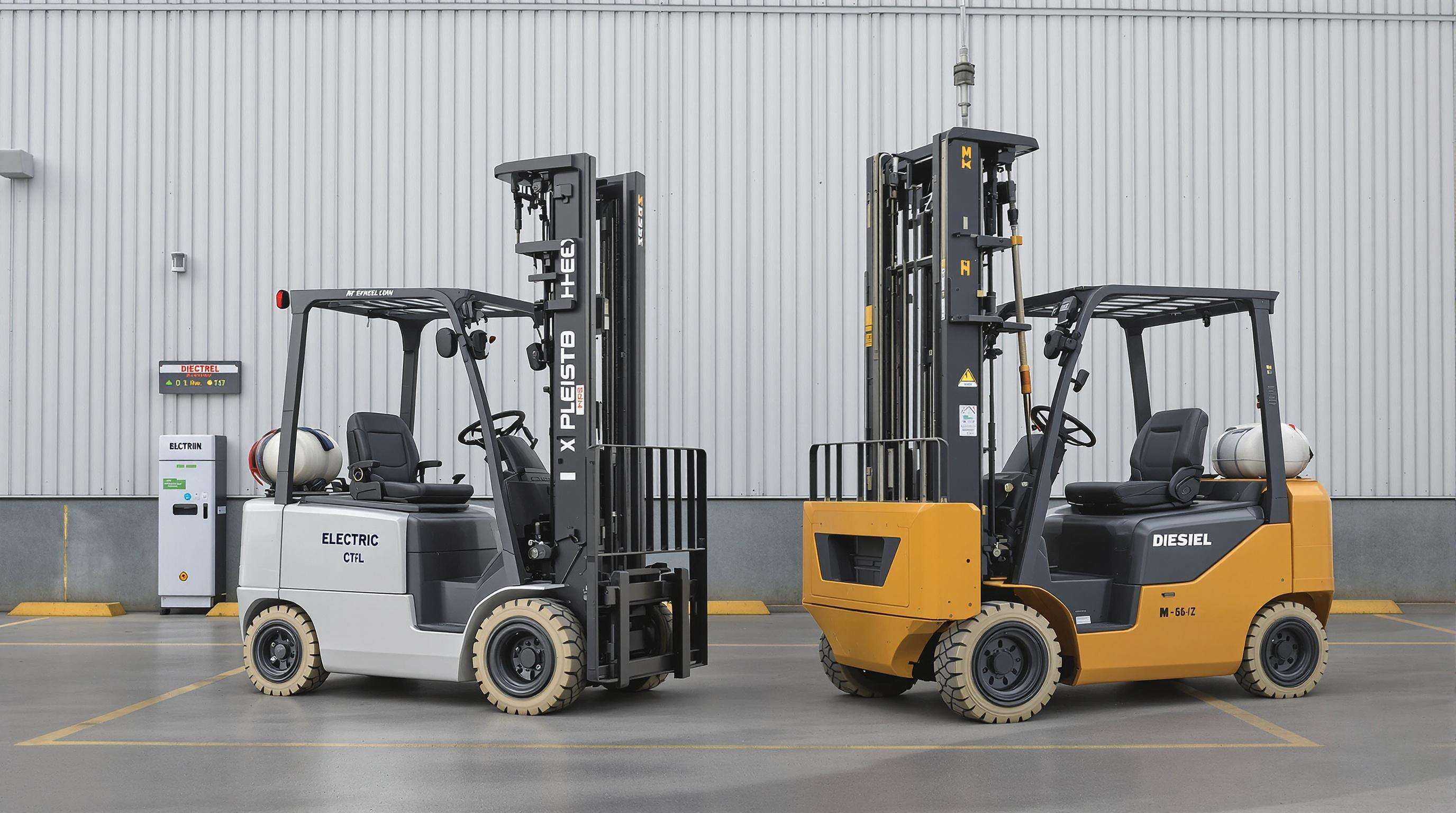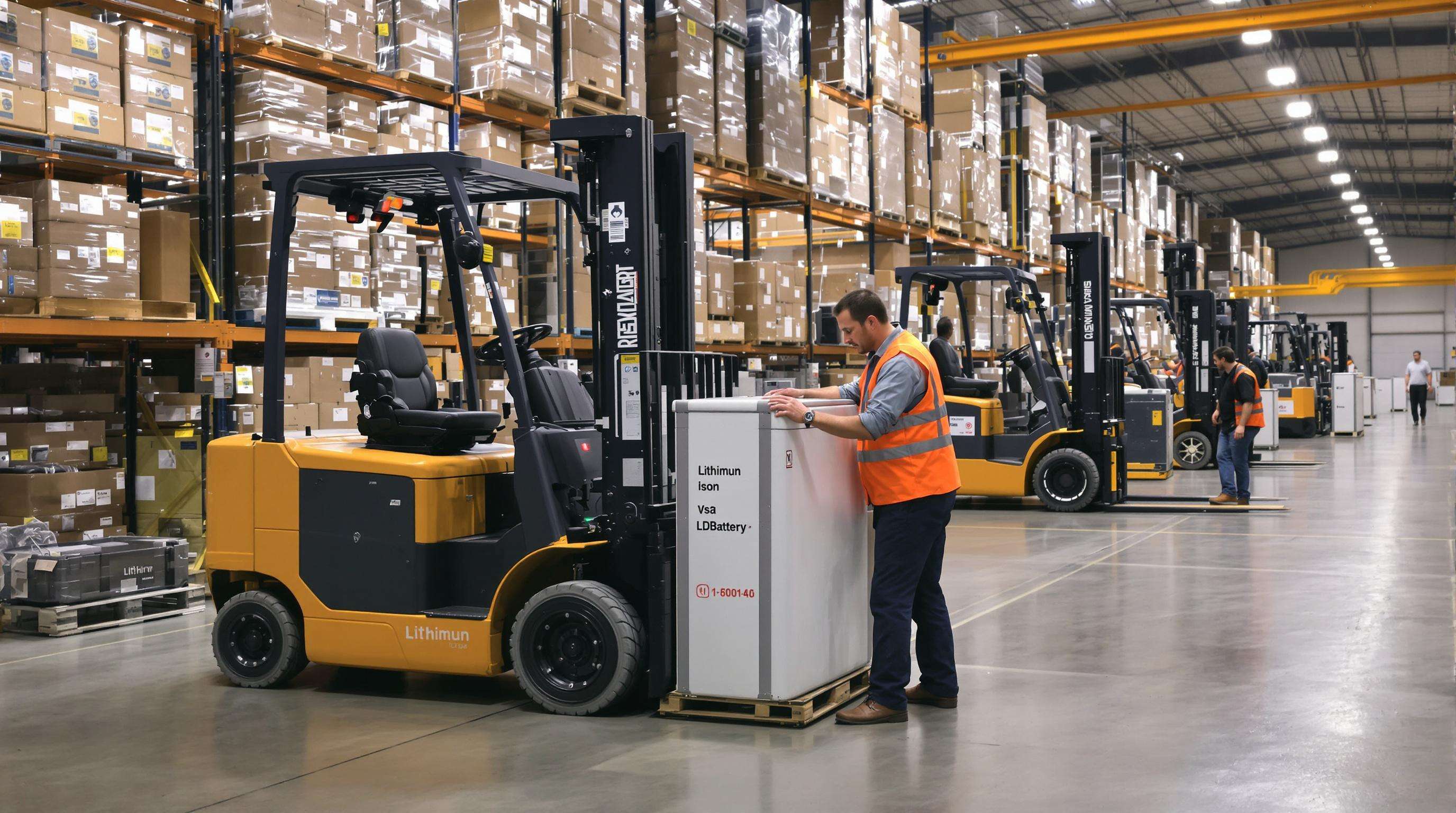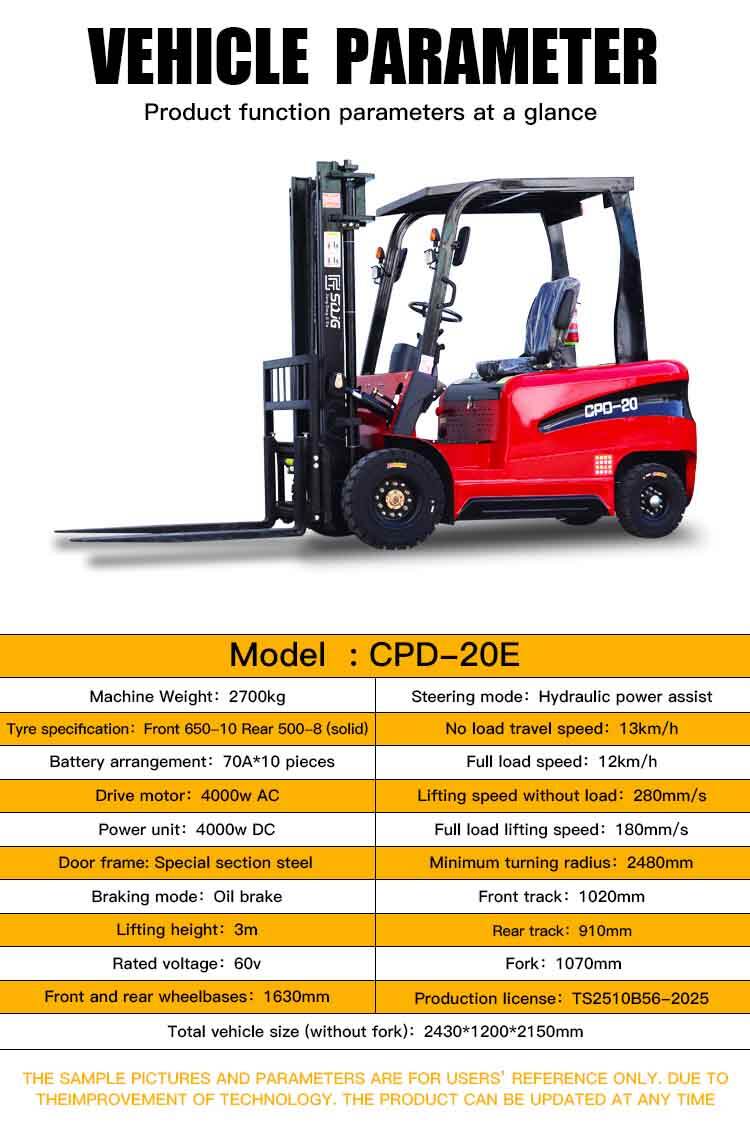Operational Environment Suitability: Electric Forklifts vs. Diesel Forklifts
Indoor warehouse applications and emission constraints
Electric forklifts suit environmentally sensitive warehouse operations since they are clean and quite. Electric models have no dangerous particulate matter as does diesel, and no carbon monoxide; they can help keep air clean indoors, for instance in food and pharmaceutical warehouses. OSHA standards frequently do not allow internal combustion engines in an enclosed space without expensive ventilation improvements. Additionally, electric forklifts maneuver through narrow aisles easier due to their tight frame and without the need to store fuel. Operating at less than 75 decibels (dB), FLEXFLOs cause less worker fatigue during multi-shift operations than diesel-powered models (85 dB).
Outdoor construction sites and heavy-load requirements
Diesel Engine Diesel powered forklift trucks are tougher than LPG/gas forklift, and can be used in almost all of our heavy-duty outdoor applications. Their powerful, high-torque engines allow for loads over 15,000 lbs on rough ground, which are necessary when working in construction, logging and other similar industries. Advanced ground clearance, all-weather capabilities, fast refueling for long 10+ hour days, and vibration-isolated components for stability on even the roughest terrain. Electric forklifts are limited to use outside due to reduced tire traction on muddy sites, battery performance falls below -10°C, and potential charging logistics on distant sites. There is still nothing to beat diesel for maximum power on projects.
Cost Analysis Across Lifespan: Breaking Down Forklift Economics

Upfront Purchase Price Comparison (2024 Market Data)
Electric vs. Diesel Forklift Initial Cost – The initial cost of an electric forklift is between 35-40% higher than a diesel model, costing on average $38,000 and averaging $28,000 respectively. This disparity is a result of battery technology and stronger chassis designs. But those operating an electric fleet pay off the premium in that extra outlay after just three years in operational savings, the comparison says. The lower cost of entry for diesel can be attractive for short-term projects, but it doesn’t factor in fuel price volatility as seen in Q1 2024 with a 22% movement in diesel prices.
Long-Term Fuel/Electricity vs. Maintenance Cost Projections
Electric models offer predictable expenses:
- Energy costs: $1,200 annual electricity vs. $6,500 diesel fuel
- Maintenance: $900/year electric vs. $3,500 diesel
- Downtime: 18hrs/year electric diagnostics vs. 45hrs for diesel repairs
Over five years, diesel’s total ownership costs exceed electric by 58% when operating 2,000 hours annually. Hybrid regeneration braking in electric models reduces brake pad replacement frequency by 70%.
Resale Value Depreciation Trends for Both Forklift Types
Electric forklifts retain 45% residual value after five years versus 30% for diesel units. Key drivers include tighter emissions regulations, 80% of logistics firms prioritizing electric fleets, and battery advancements extending lifespans to 10+ years. Diesel resale markets remain viable in regions with lax emissions standards, but electric models sell 22% faster at auction.
Environmental Impact and Workplace Safety Considerations
CO2 emissions comparison in continuous operations
Diesel powered forklifts release around 10.2 kg of CO2 per hour – that’s eight times as much as standard grid powered electric models on a full charge. These emissions contribute to decreased indoor air quality which increases respiratory risks and OSHA violations by 27%. Electric forklifts reduce particulate exposure and reduce overall emissions by more than 86% when working an 8-hour shift, giving business a tool it needs to achieve their carbon neutrality goals.
Electric models also enhance workplace safety, reducing incident reports related to air contamination by 34%. Companies transitioning to electric fleets report fewer worker compensation claims for respiratory issues and higher productivity in ventilation-limited environments.
Torque curves: Electric motors vs. diesel engines (0-10k hours)
And electric forklifts give you instant torque, which is perfect for lots of stop and go in a warehouse. But diesel engines do maintain 24-32% more sustained torque after the 5000 hour point, which is what is needed for heavy lifting above 8,000 lbs, slope operations of more than a 10% grade and in high temperature conditions (32 °C+). The torque of electric models decreases by 15-18% after 8,000 service hours because of demagnetisation of permanent magnets.
Battery limitations in extended-shift operations

Lithium-ion batteries in modern electric forklifts typically provide 6-8 hours of continuous operation, but capacity degrades over time:
| Operational Year | Capacity Retention | Power Output Drop |
|---|---|---|
| Year 1 | 95% | 3% |
| Year 3 | 82% | 12% |
| Year 5 | 68% | 21% |
This necessitates 30-45 minute charging pauses during 10-hour shifts, reducing effective uptime by 18%. Advanced thermal management systems can mitigate capacity fade by 14% but add $3,200-$4,800 to upfront costs. For operations exceeding 16 hours/day, diesel backups or battery-swap infrastructure are often required.
Maintenance Requirements and Component Longevity
Battery Replacement Cycles vs. Engine Overhaul Schedules
Electric forklifts require lithium-ion battery replacements every 3-5 years, costing 18-25% of the initial price. Diesel forklifts avoid battery costs but need engine overhauls every 8,000-10,000 operational hours, involving piston ring replacements, fuel injector cleaning, and turbocharger inspections that take 15-40 labor hours per service.
Key maintenance differences:
| Component | Electric Forklifts | Diesel Forklifts |
|---|---|---|
| Energy Source Lifespan | 3-5 years (single replacement) | 10k-hour overhauls (periodic) |
| Labor Hours/Year | 12-18 (basic diagnostics) | 30-45 (engine-focused tasks) |
| Replacement Complexity | 4-8 hour swap | 2-3 day disassembly/reassembly |
Scheduled Maintenance Costs Comparison (5-Year Analysis)
Electric models average $1,200/year in routine costs plus a $5k-$8k battery replacement in year 4. Diesel units incur $2,500-$3,800 annual expenses for oil changes, air filter replacements, and emissions system upkeep. Over five years, diesel variants show 22-27% higher cumulative maintenance costs despite avoiding battery replacement penalties.
Frequently Asked Questions
Which forklift is better for indoor use?
Electric forklifts are better suited for indoor use due to their zero emissions and quieter operation, making them ideal for environments where air quality and noise are concerns.
What is the average lifespan of a lithium-ion battery in electric forklifts?
The average lifespan of a lithium-ion battery in electric forklifts is typically between 3-5 years, depending on usage patterns and maintenance protocols.
How do diesel forklifts perform in extreme temperatures?
Diesel forklifts are better suited for operations in extreme temperatures due to their higher sustained torque and resilience, especially at higher temperatures and on challenging terrains.
Are electric forklifts more cost-effective than diesel over their lifespan?
While the initial cost of electric forklifts is higher, they tend to be more cost-effective over their lifespan due to lower energy and maintenance costs.
What factors influence the resale value of electric versus diesel forklifts?
Electric forklifts generally have a higher resale value due to tighter emissions regulations and advancements in battery life, making them more appealing in markets prioritizing sustainability.
Table of Contents
- Operational Environment Suitability: Electric Forklifts vs. Diesel Forklifts
- Cost Analysis Across Lifespan: Breaking Down Forklift Economics
- Environmental Impact and Workplace Safety Considerations
- Torque curves: Electric motors vs. diesel engines (0-10k hours)
- Battery limitations in extended-shift operations
- Maintenance Requirements and Component Longevity
-
Frequently Asked Questions
- Which forklift is better for indoor use?
- What is the average lifespan of a lithium-ion battery in electric forklifts?
- How do diesel forklifts perform in extreme temperatures?
- Are electric forklifts more cost-effective than diesel over their lifespan?
- What factors influence the resale value of electric versus diesel forklifts?

